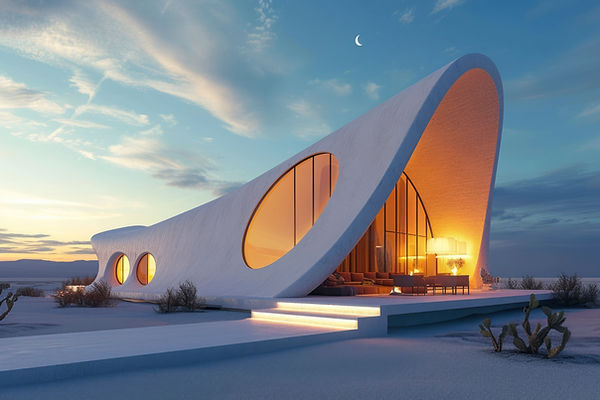Why Good Design Matters More Than You Think
Have you ever entered a room and instantly felt comfortable without knowing why? Or have you ever walked into a room and felt a little uneasy, even though there was nothing obviously wrong? These are your natural reactions to design, and they are not accidental.
Because it works so well, good design frequently goes unnoticed. Thoughtful design improves our experience without drawing attention to itself, much like the right amount of seasoning does in a delicious meal. However, its influence on our day-to-day existence goes well beyond beauty.

Behaviour Is Shaped by Design
The places we live in subtly direct our behaviour and affect our emotions. It goes without saying that a well-designed kitchen promotes effective cooking. An office that is well-organised encourages concentration and teamwork. A well-designed home encourages privacy when needed as well as togetherness.
Think about how your morning routine is different in a bathroom that has enough storage, good lighting, and comfortable spacing than one that is claustrophobic and disorganised. The difference is a fundamental change in your everyday experience, not just a matter of convenience.
Life is easier when we live in environments that suit our needs and habits. We make fewer mistakes, encounter less friction, and feel more comfortable overall. This is thoughtfully designed functionality, not luxury.
Beyond Beauty: The Unseen Benefits of Good Design
While visual appeal certainly matters, good design delivers benefits that reach far deeper:
Health and Wellbeing: Well-designed environments can boost immunity, induce better sleep, and lower stress. Both physical and mental health are influenced by natural light exposure, adequate air circulation, suitable acoustic control, and ergonomic considerations.
Energy Efficiency: Careful planning drastically lowers resource usage. Effective window placement, adequate insulation, and climate considerations can reduce energy costs without sacrificing comfort. These are very basic design choices made early on in the process rather than costly high-tech solutions.
Time and Efficiency: Possibly our most valuable resource, time, is saved by good design. Well-organised areas minimise needless movement, simplify tasks, and cut down on searching. Every day, hours that would have been wasted due to inefficiency are freed up by this efficiency compound.
Longevity and Adaptability: Well-planned areas continue to work even when requirements change. They offer flexibility and foresee future needs without requiring total redesigns. Because of its adaptability, there is less need for expensive renovations, which adds substantial long-term value.
The Hidden Cost of Poor Design
Bad design extracts a constant tax on our lives—one we often pay without recognition. Inadequate lighting strains our eyes. Poor ventilation affects our breathing and sleep quality. Awkward layouts waste our energy. Insufficient sound insulation disrupts our concentration.
These costs accumulate silently day after day, year after year. We adapt and accommodate, seldom realizing that the environment itself is the problem, not us.
Most concerning is how poor design can actually exacerbate inequality. Substandard housing design disproportionately affects those with fewer resources to modify their environments. Public spaces with poor design exclude people with different abilities. Workplace design that ignores human needs impacts productivity and well being across socioeconomic levels.
The Value Proposition of Design
Good design is an investment with enormous returns, not a cost. A well-designed home is easier to maintain, uses fewer resources, can be adjusted to meet changing needs, and has a higher market value. A well-considered workplace increases productivity, enhances retention, and lowers absenteeism.
Although it usually makes up a small portion of the total project costs, the initial investment in high-quality design affects almost every element of long-term value. The true cost arises from design compromises, which invariably result in reduced functionality, increased operating expenses, and early obsolescence.
Recognizing Quality Design
Quality design isn't necessarily expensive or trendy. It solves problems elegantly and often invisibly. It anticipates needs before they become apparent. It creates spaces that feel intuitively right.
Look for these hallmarks of good design:
Purposefulness: Everything has a reason for being exactly where and how it is.
Proportion and Scale: Elements relate properly to one another and to human dimensions.
Light Quality: Natural light is maximized appropriately, and artificial lighting serves specific purposes.
Material Integrity: Honest use is made of materials chosen for their suitable qualities.
Contextual Harmony: The design carefully considers its surroundings, climate, and cultural background.
Functionality: Most importantly, the design performs remarkably well for the purpose for which it was created.
The Professional Difference
Although anyone can understand design principles, professional expertise cannot be replaced. Skilled designers contribute extensive understanding of human factors, building techniques, materials, and regulations. Others fail to notice the opportunities and dangers they do. They turn intangible needs into tangible answers.
Most importantly, professional designers prevent expensive mistakes. They help clients avoid choices that seem reasonable in isolation but create problems in practice. They ensure systems integrate properly and function as intended. Their oversight during implementation maintains design integrity when real-world complications arise.
At ar.Studio, we think everyone should be able to enjoy good design. Our strategy is centred on designing environments that are functionally beautiful for their users—areas that address issues, promote wellbeing and endure. Whether designing a complex commercial project or reimagining a small flat, we pay close attention to how people live, work and interact with their surroundings. Because we know that good design is about improving people's lives in subtle and meaningful ways, not about making statements or copying trends.